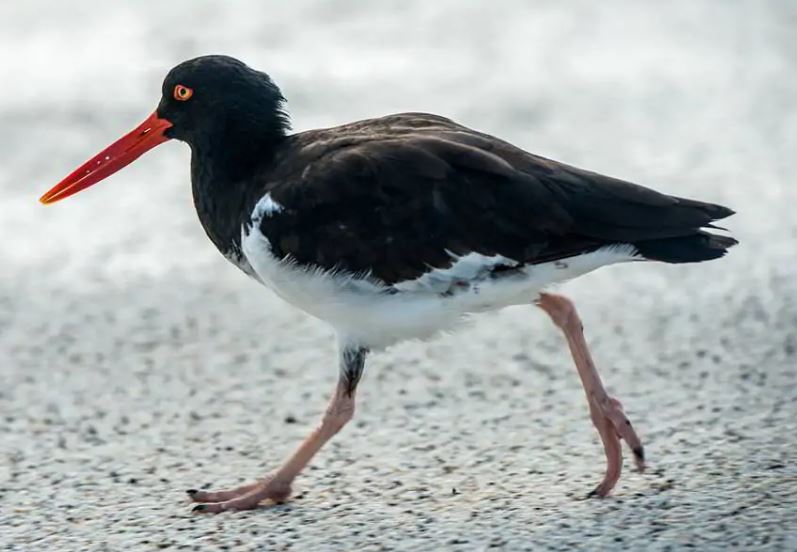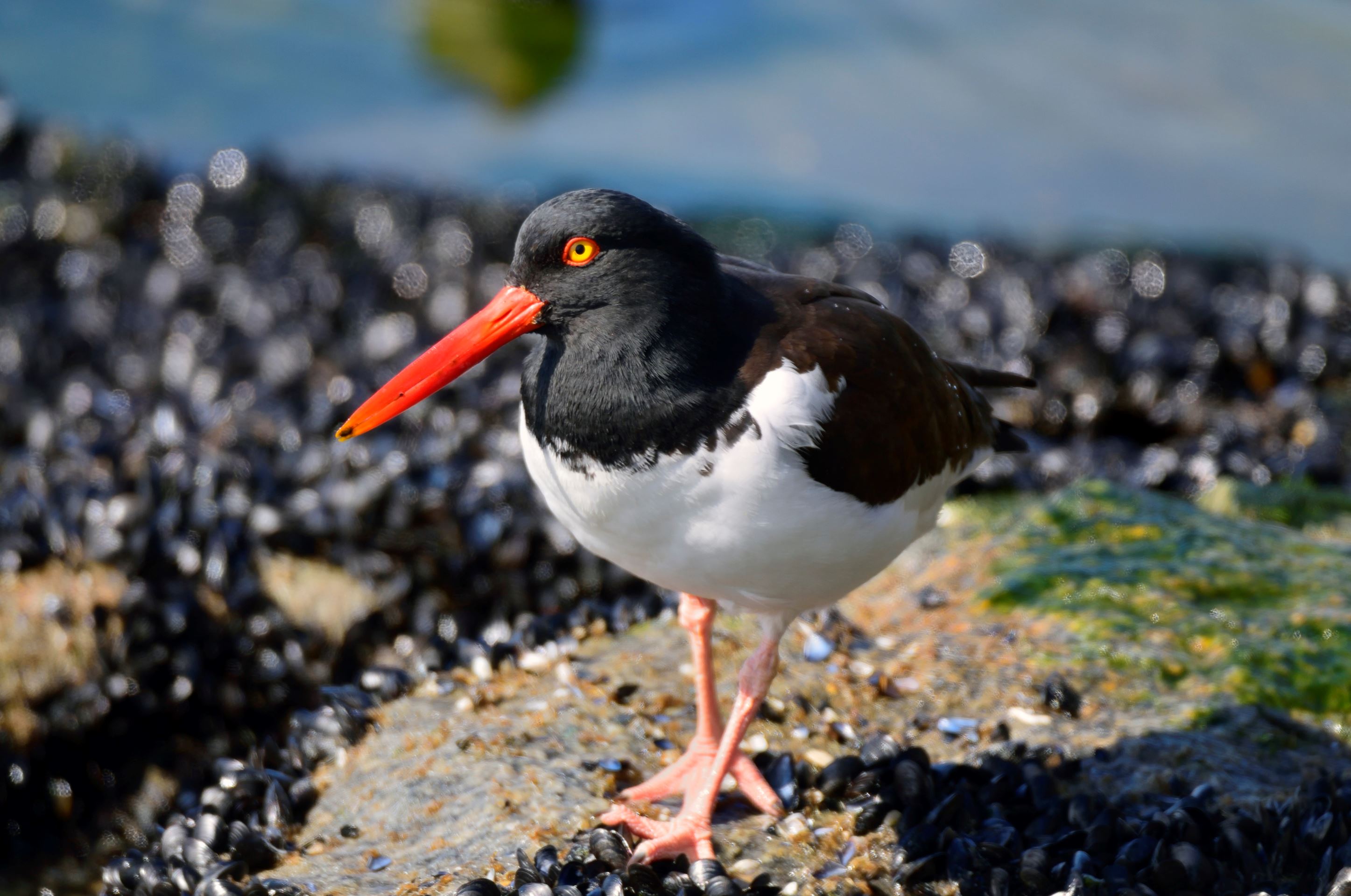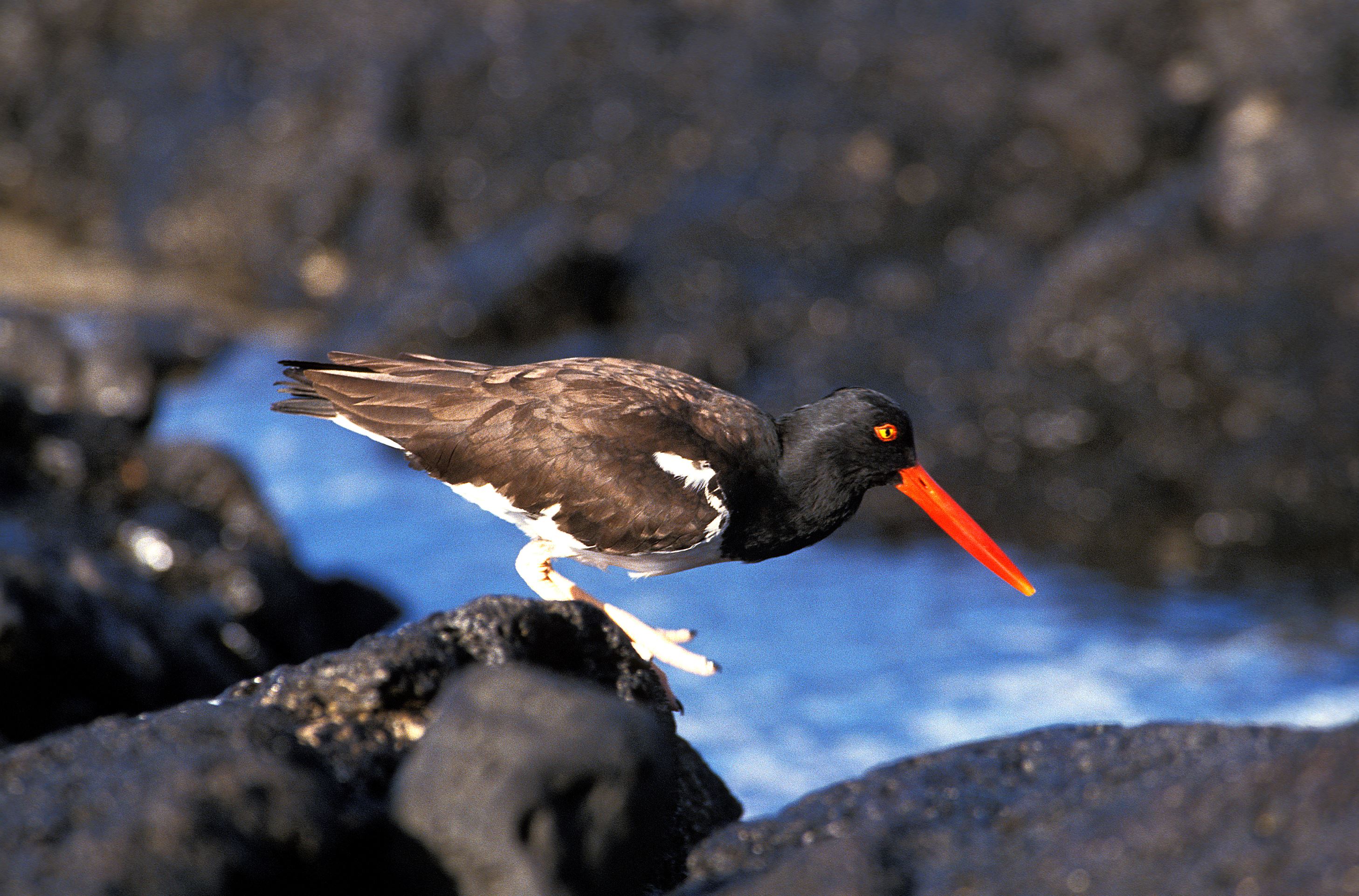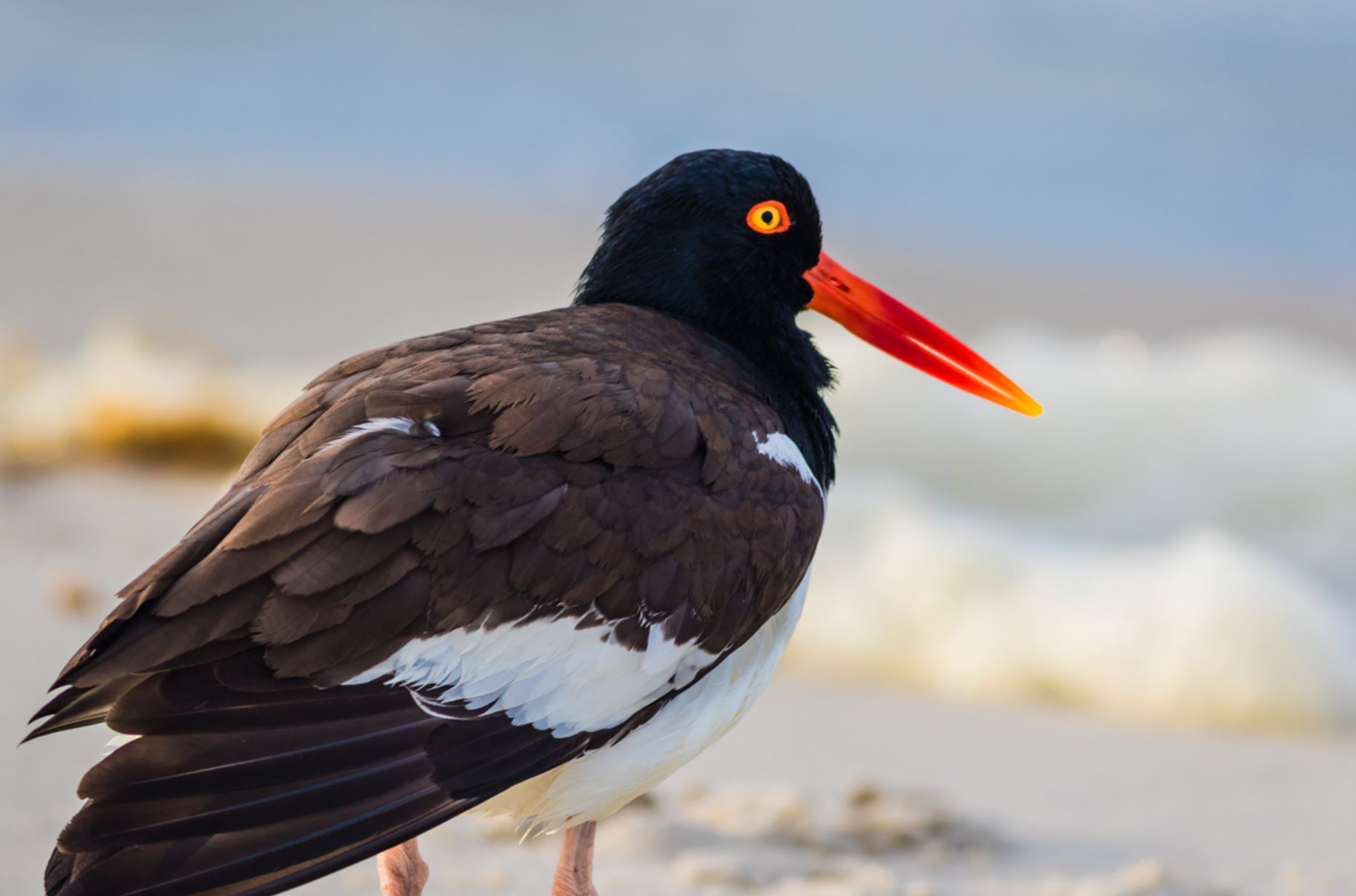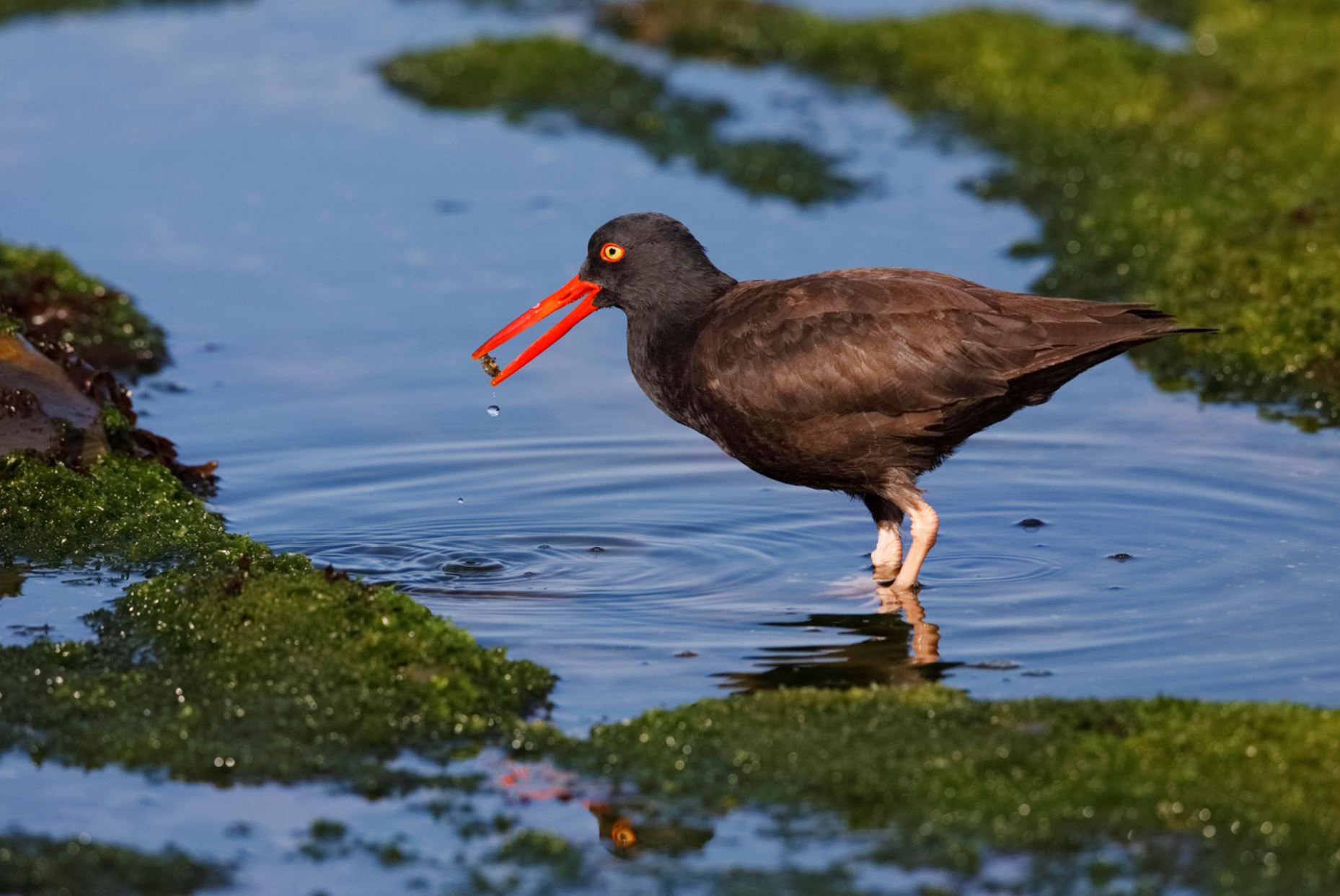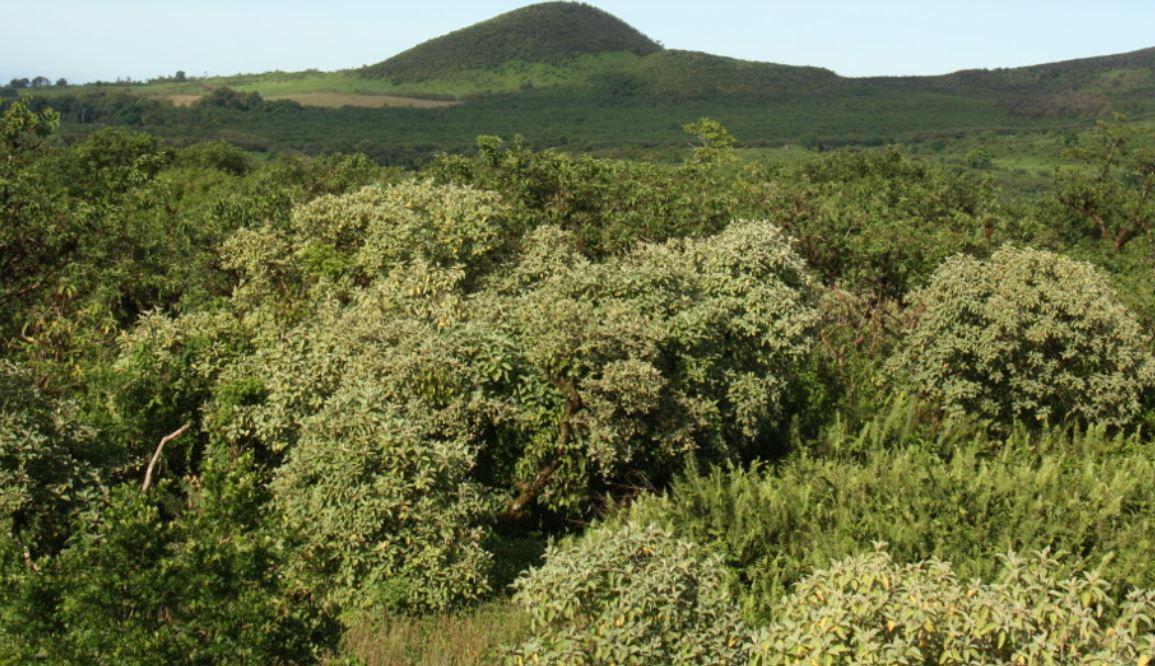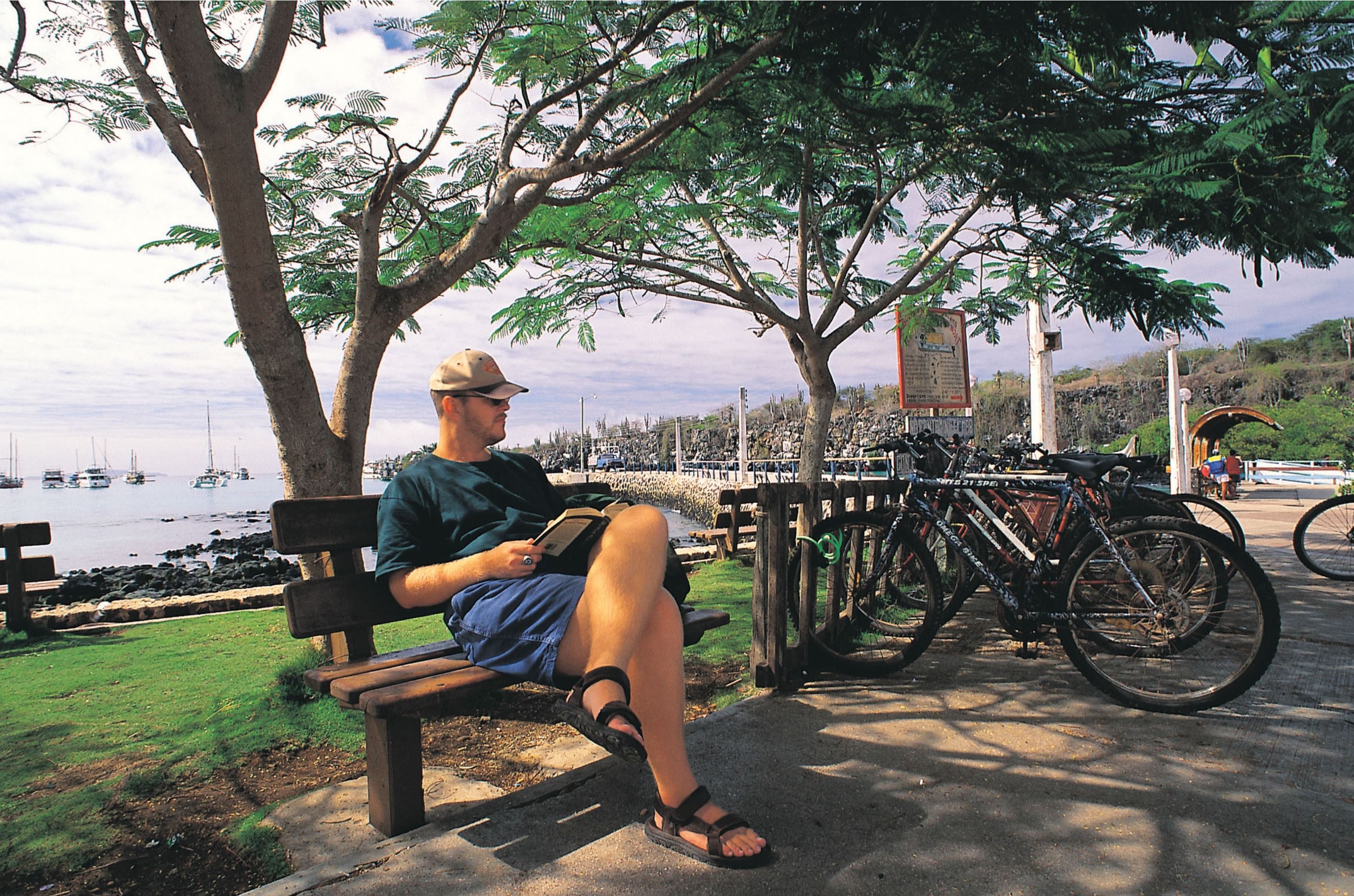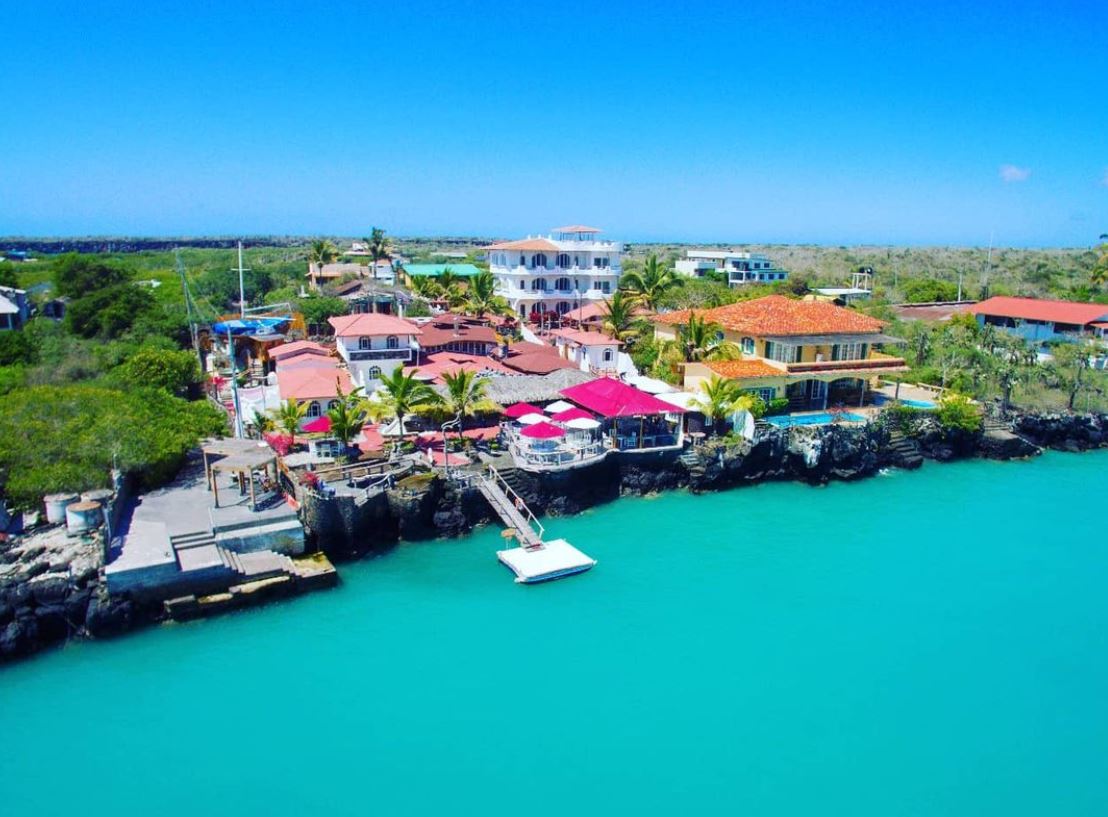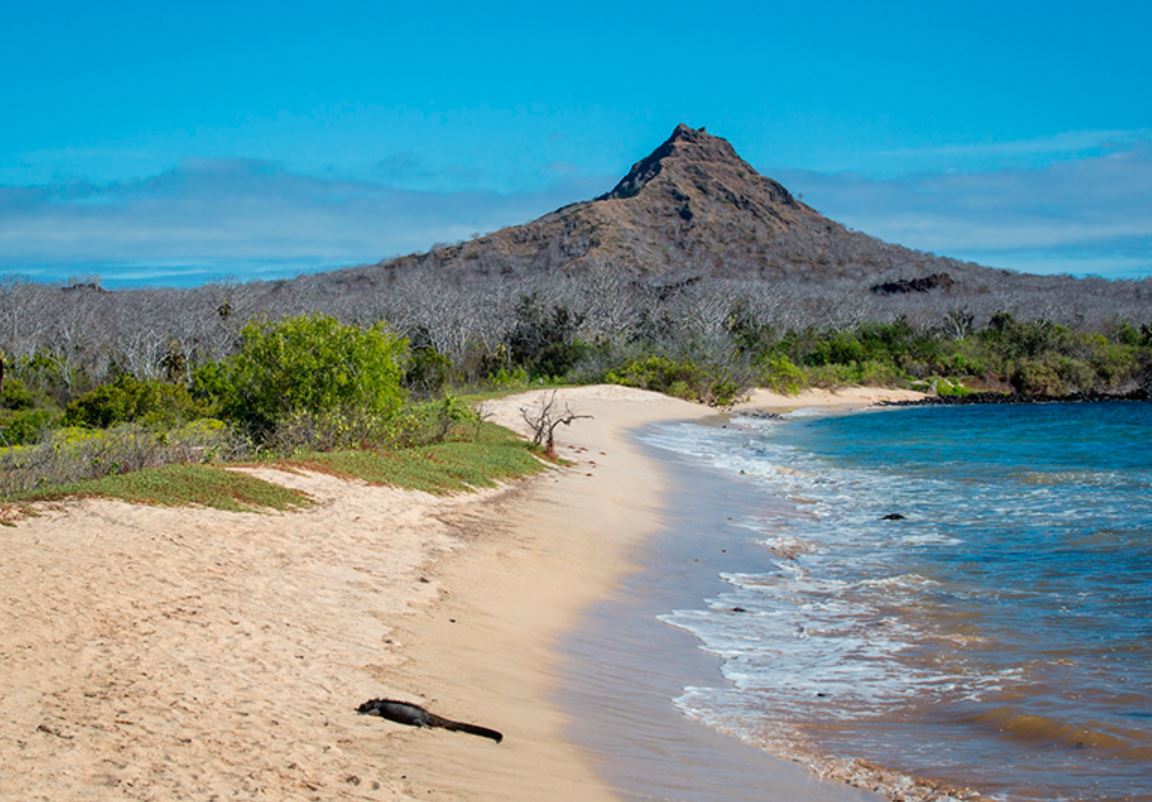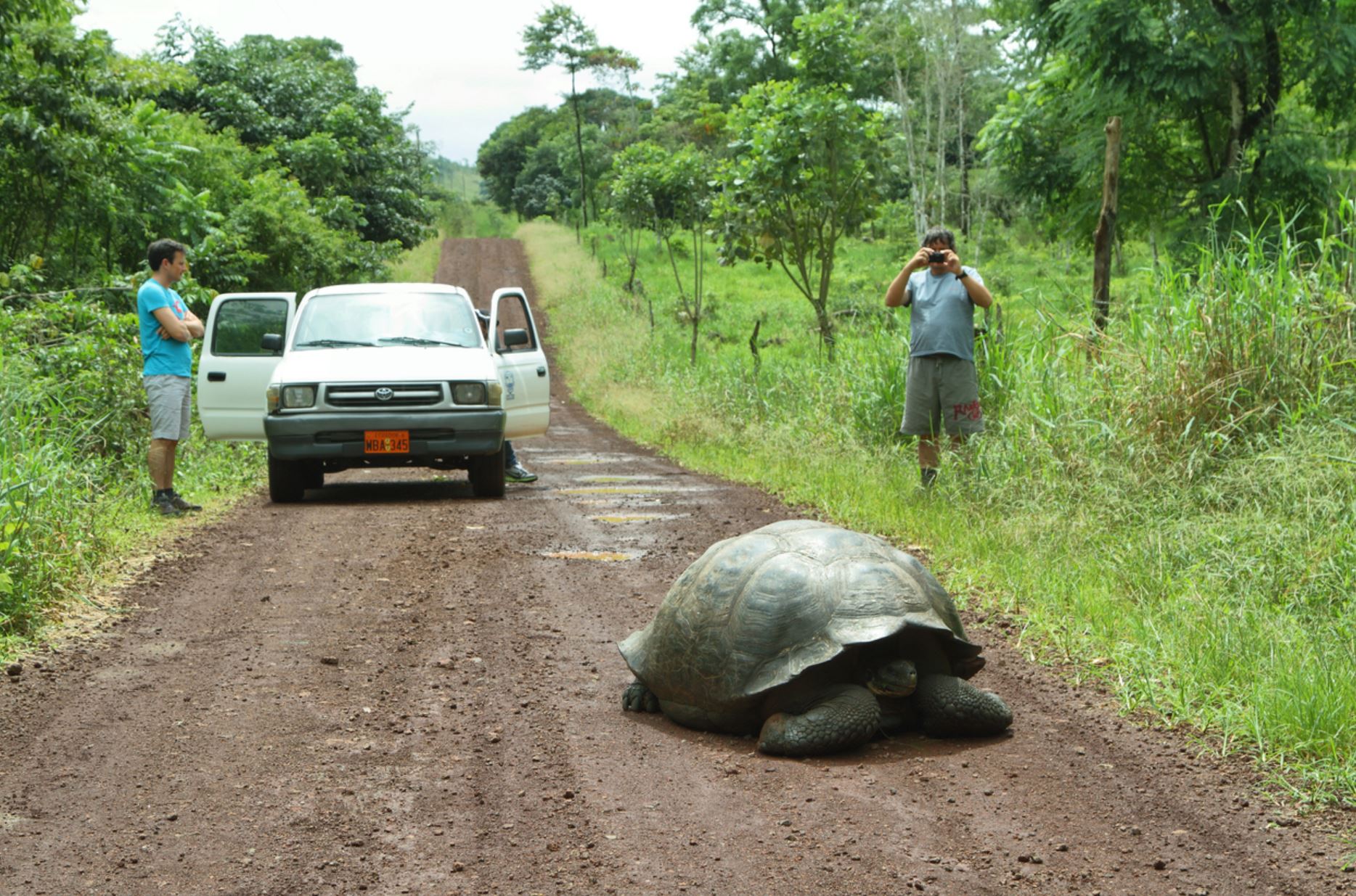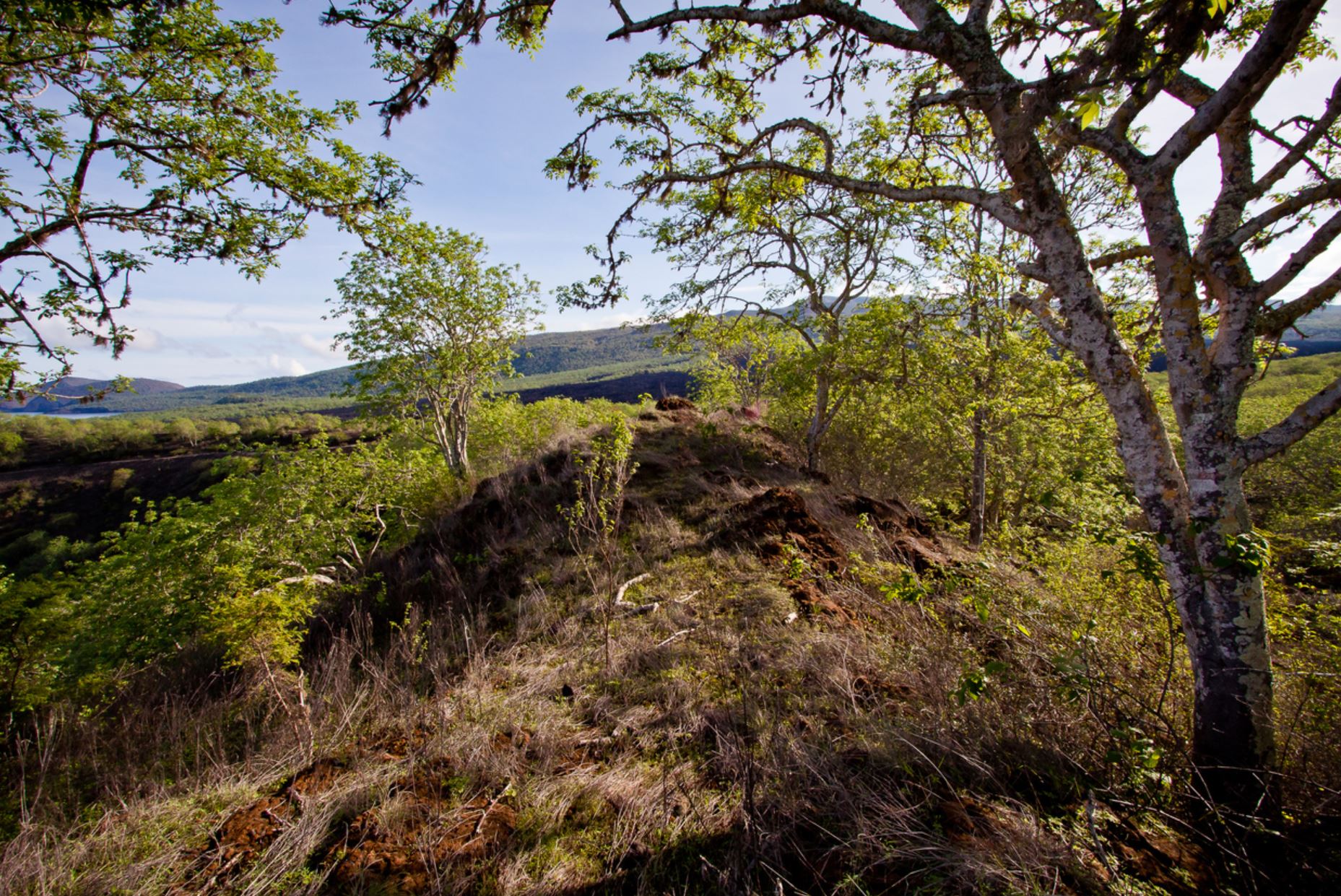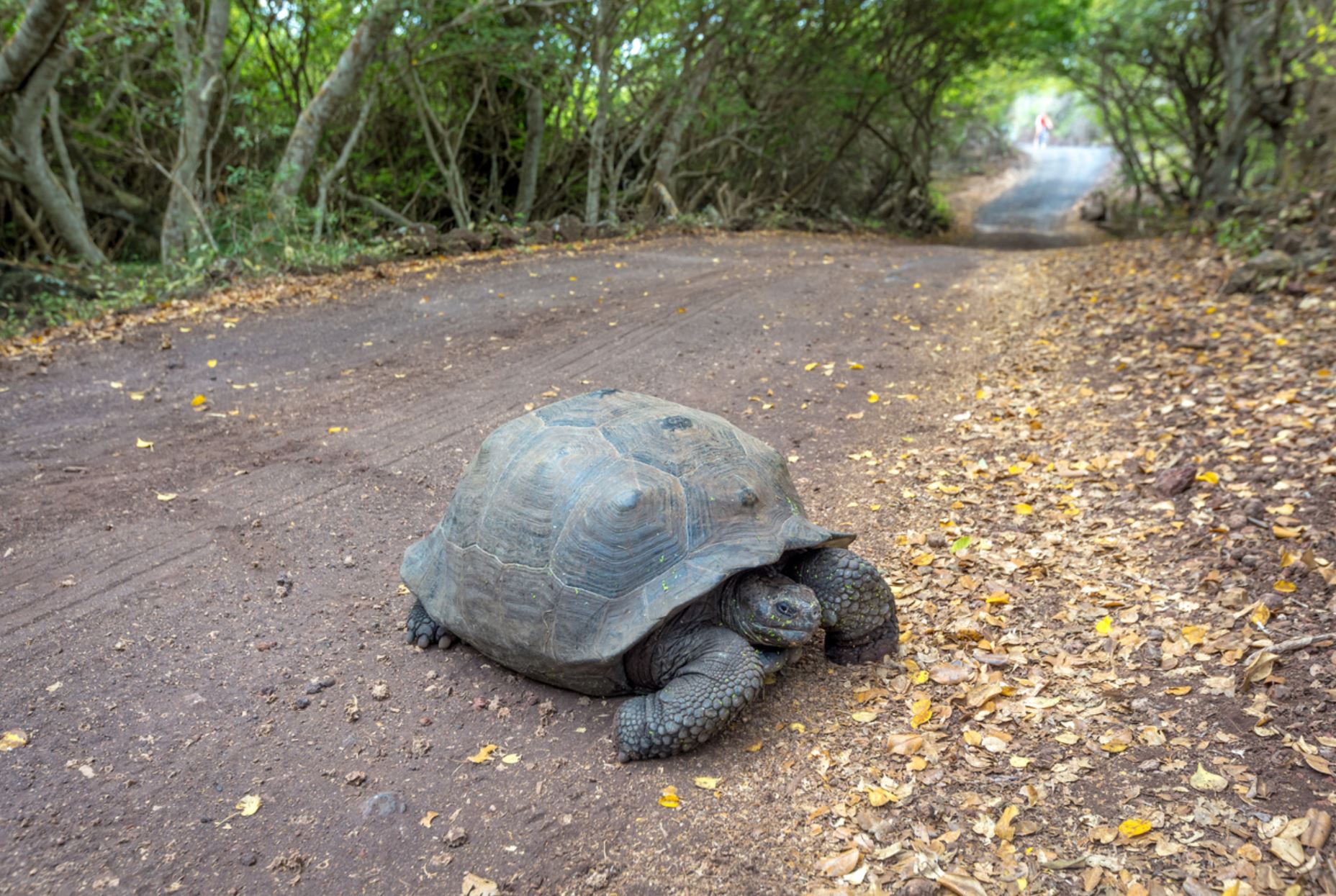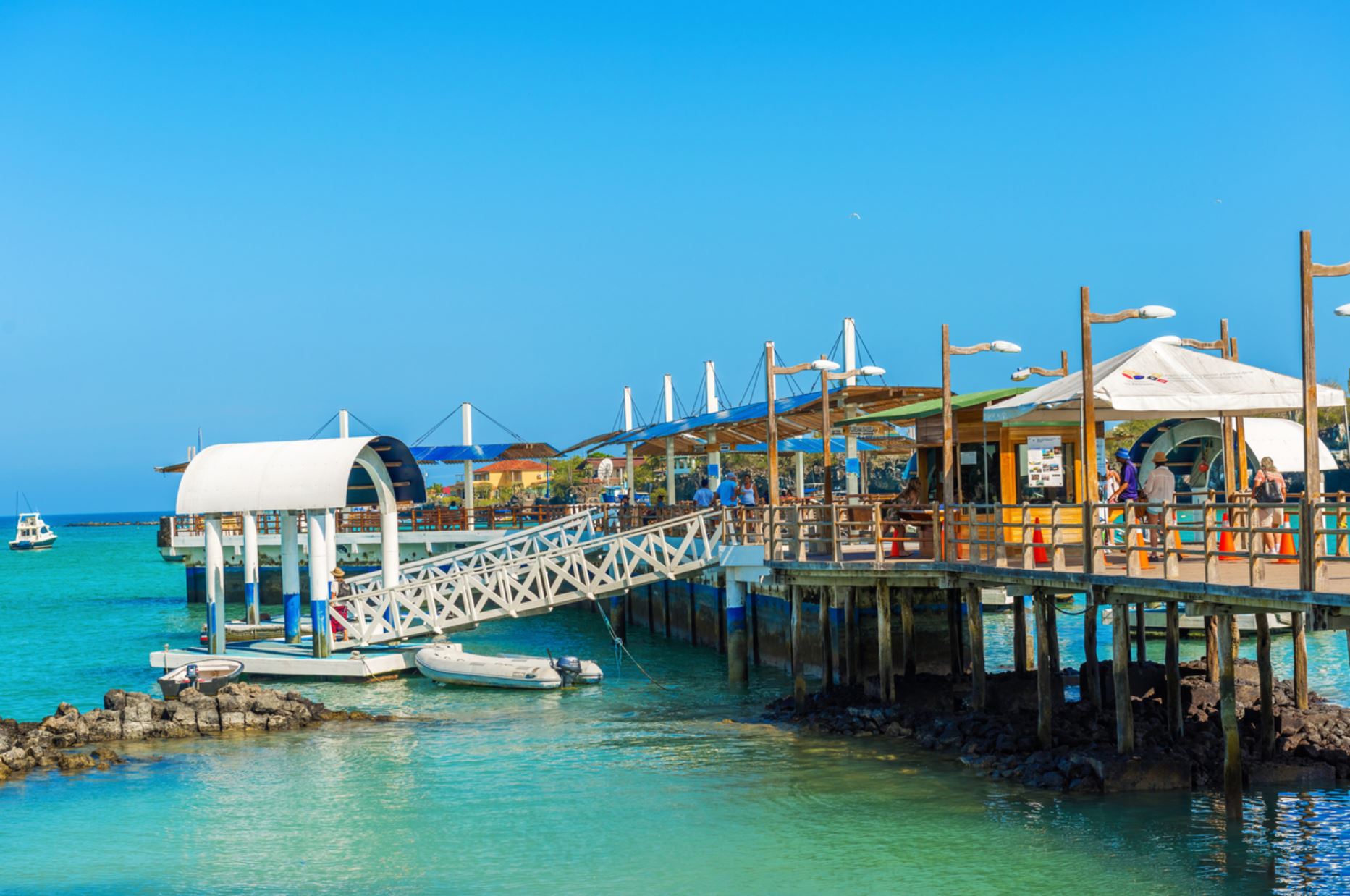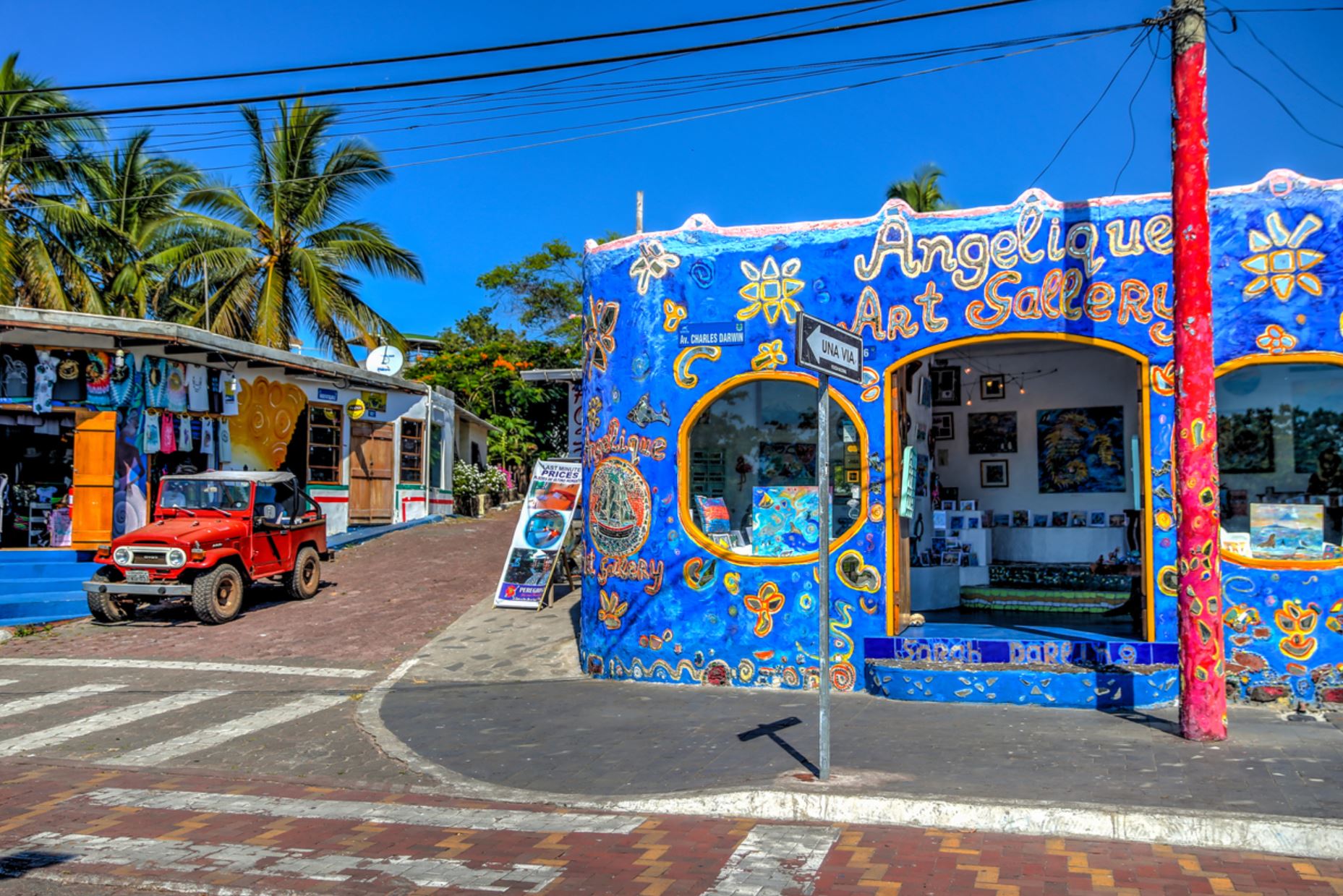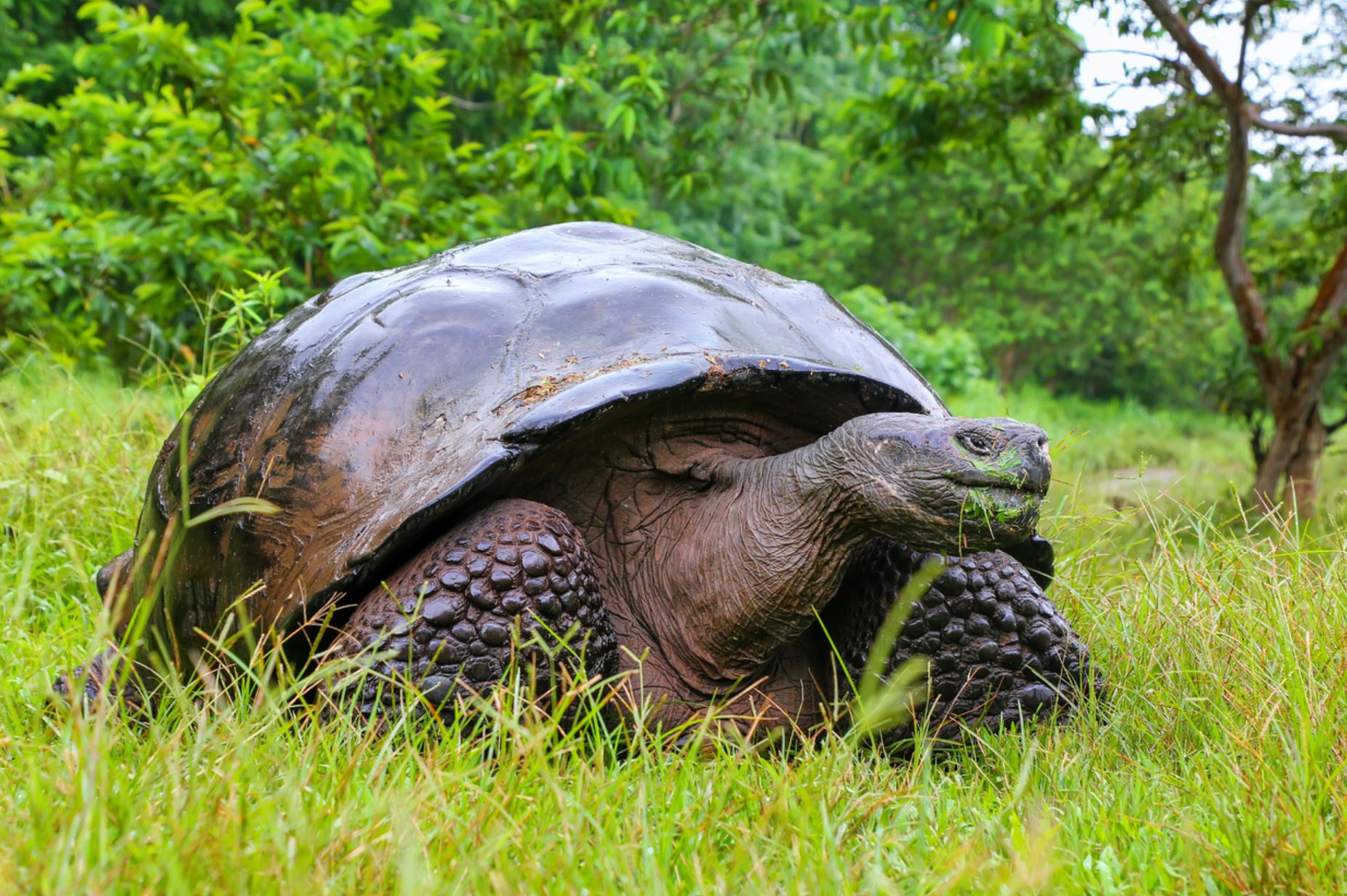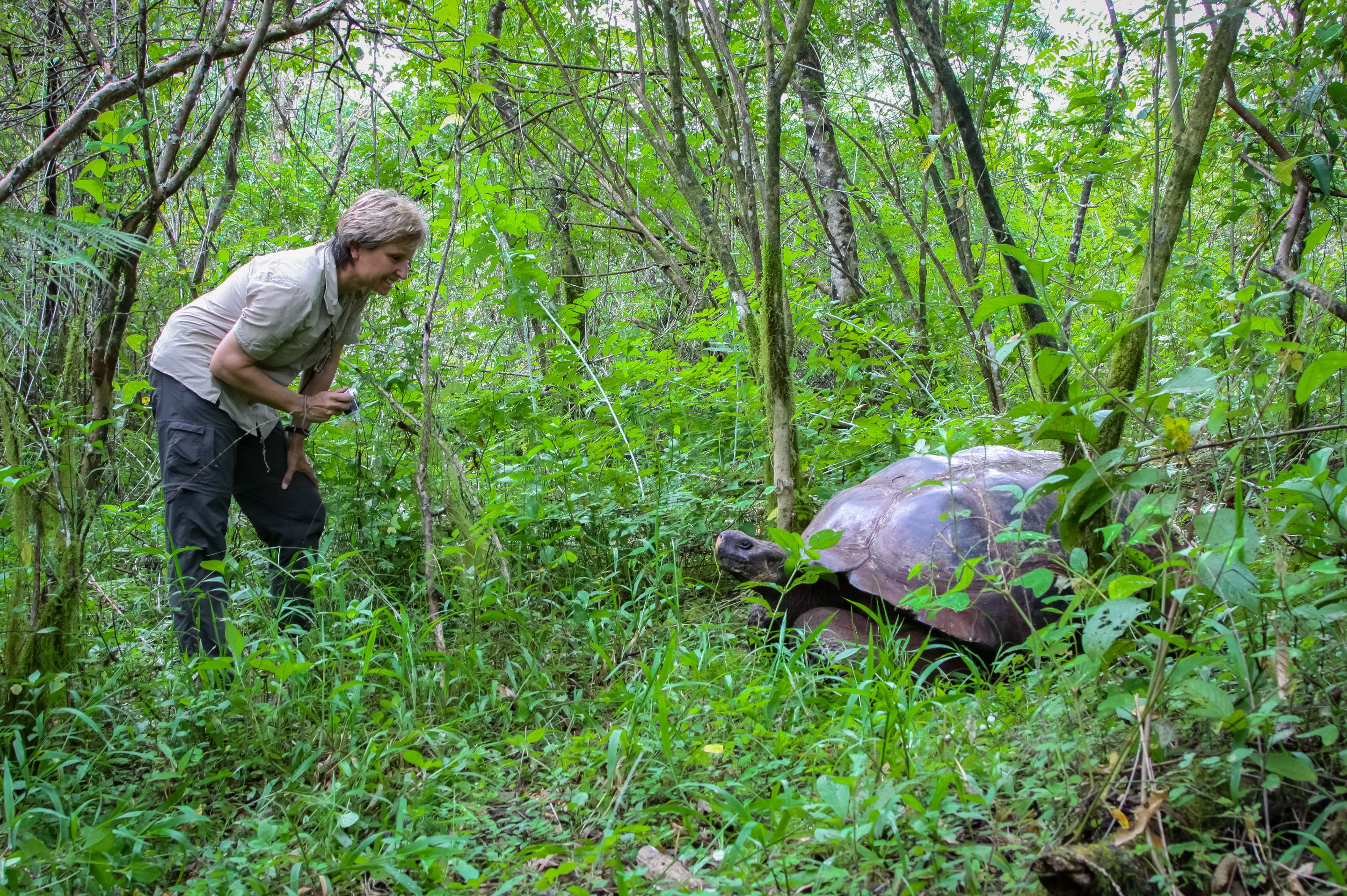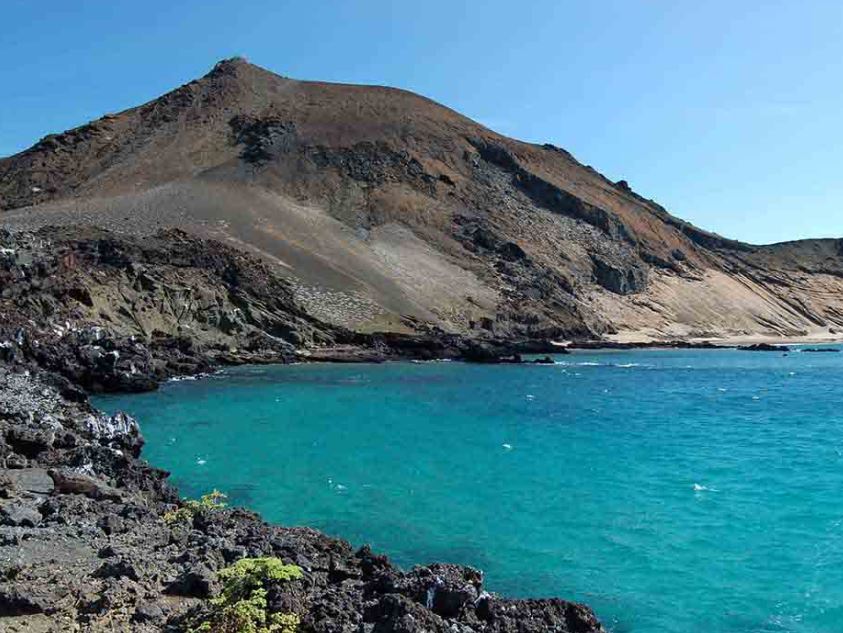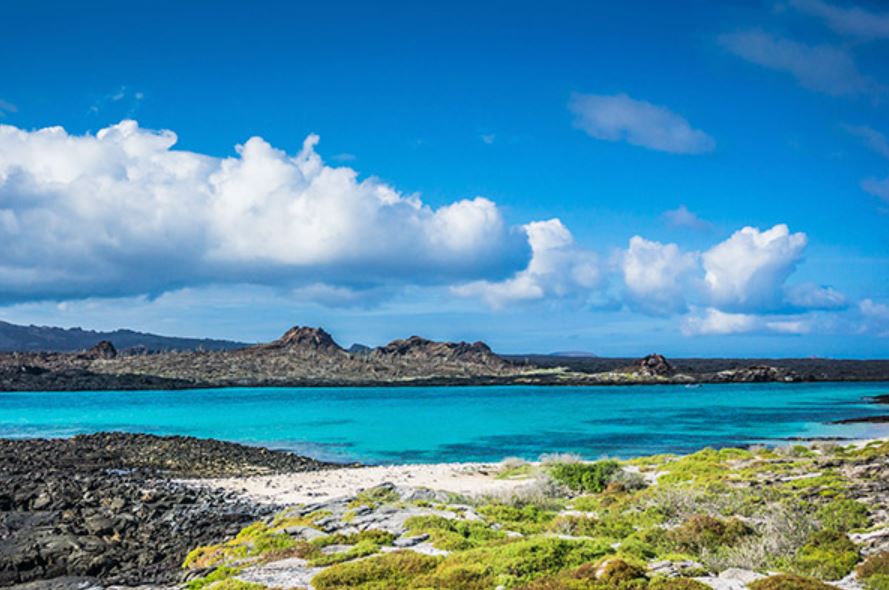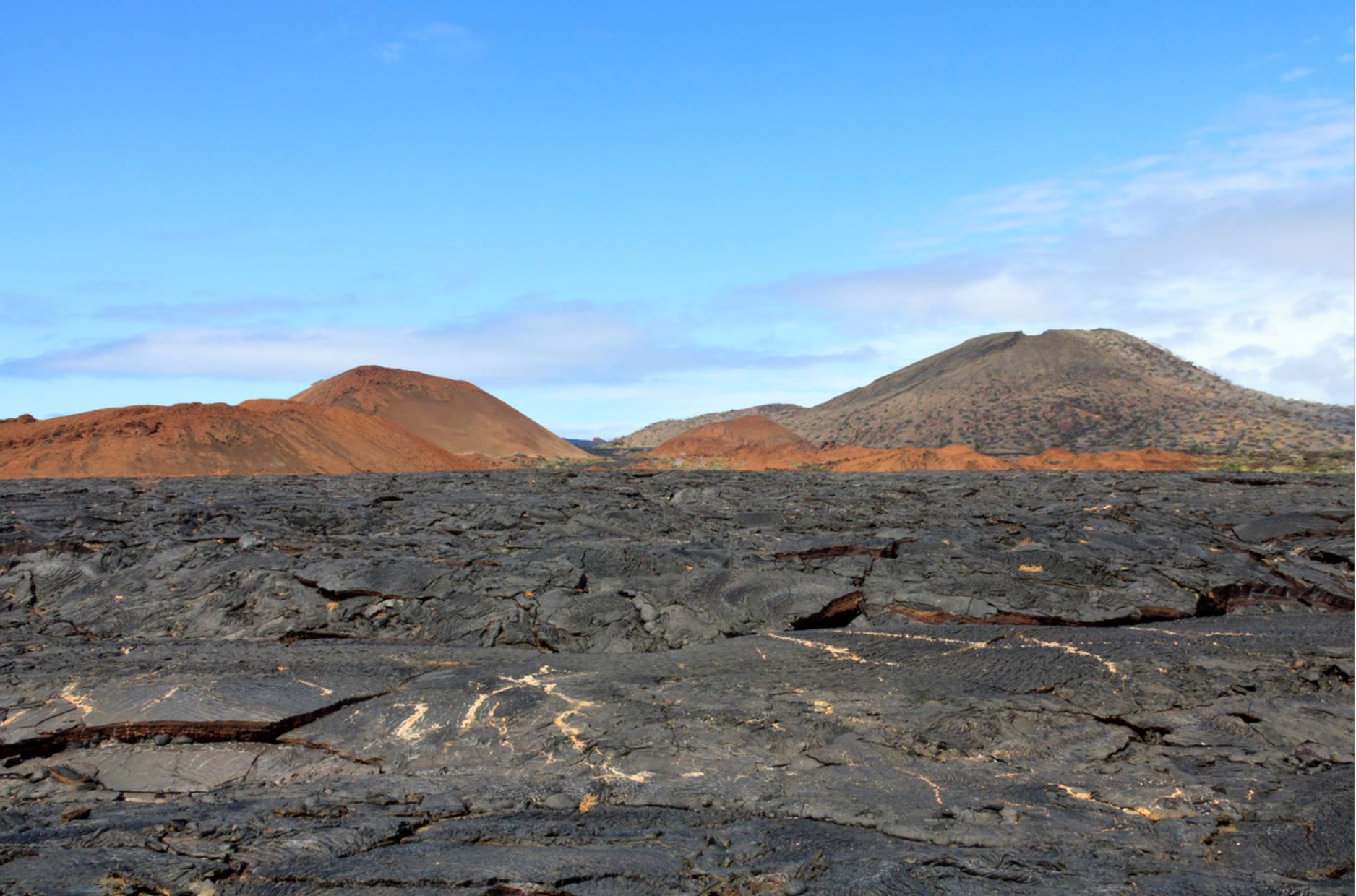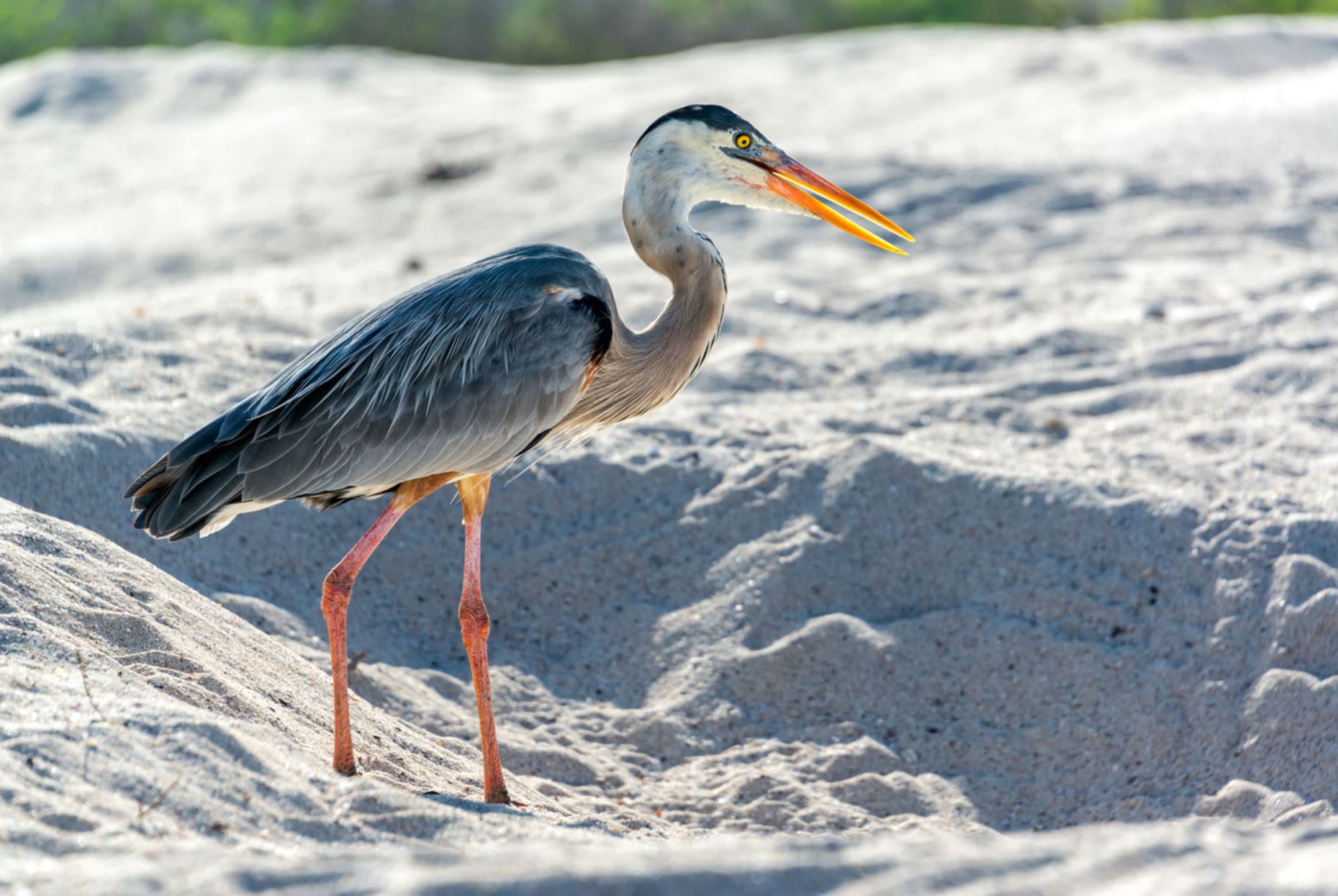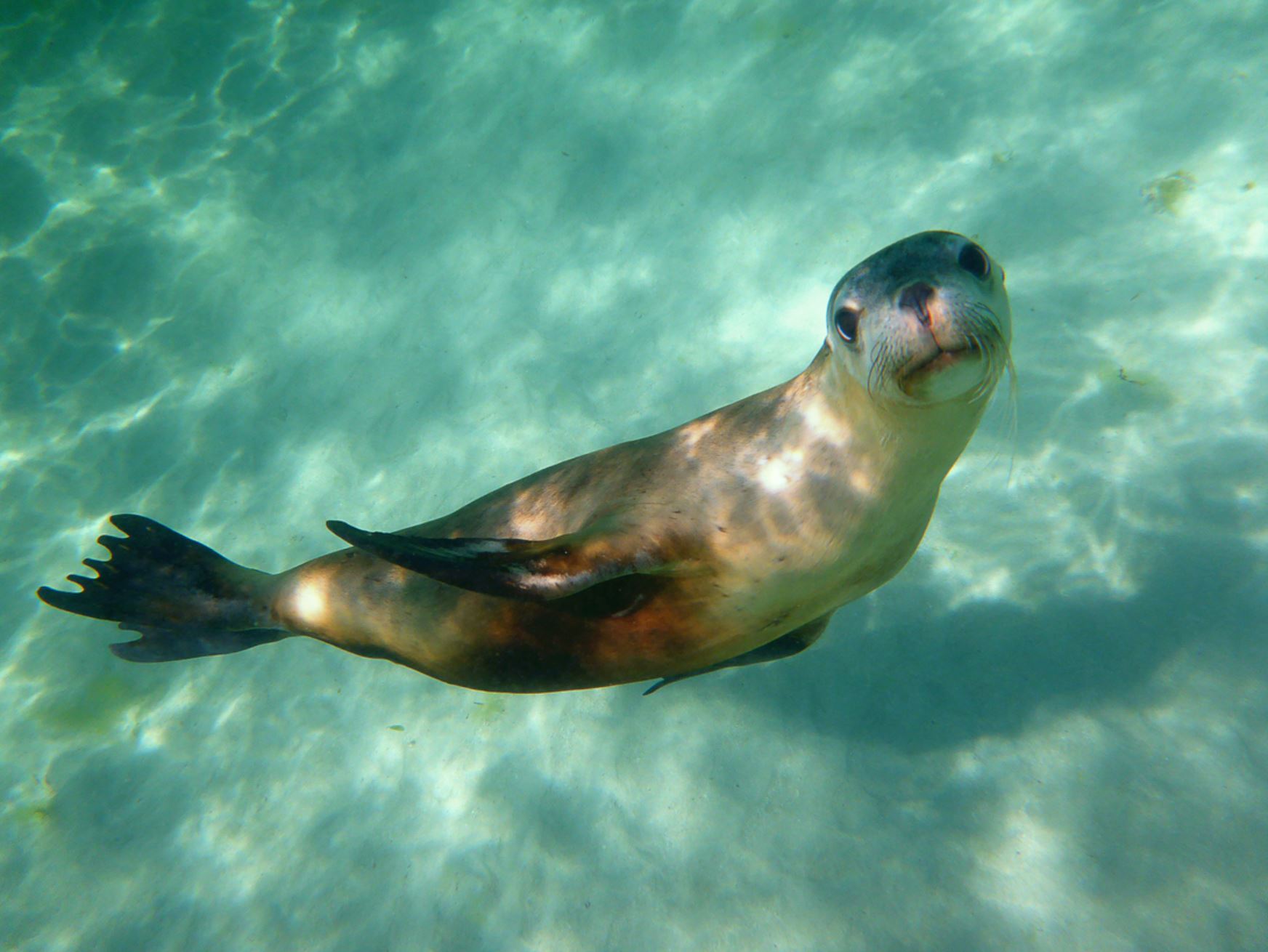American Oystercatcher
The American Oystercatcher bird is found all along the Pacific coast and in some areas of the Atlantic Ocean. In the Galapagos, they are found in the intertidal zone of most islands. Their population isn’t big; around 400 birds live in the archipelago.
Males and females are similar and they are usually seen in pairs and sometimes in groups. They breed mainly in the months of October to March and can be seen patrolling the beach in search of food and when they curiously approach tourists. Their red bright bills and pale pink legs can be seen among marsh, where they prefer to remain most of the time in search for food.
They feed on mollusks, worms, and marine invertebrates which they search with their beak in muddy terrains, and with the strength of the beak force to open it. Because their food is on the ground, they rather walk than fly.
The courtship begins when the male and the female walk together pipping the same note or they fly off together; their bond lastest forever. The male prepares the nest by scratching the ground and marking territory. Once, the nest is ready, the female can lay 1 to 4 eggs that will be incubated by both parents for about 28 days. After a month, chicks are born, they are encouraged to practice fishing to reduce predator attacks. Chicks become fully independent after two months of age.
- Animal Group: Shorebirds
- Scientific Name: Haematopus palliatus
- Animal Average Size: 43 cm
- Animal Average Weight: 14.1 – 24.7 oz / 400 – 700 g
Santiago island
Santa Cruz island
Pictures
Islands where you can see the animal with a little luck:
Santa Cruz
It is located on the center of the archipelago, the reason why it is the biggest human settlement, with a population of about 19 thousand people. This island is the most developed in terms of human population that started when one man was abandoned and survived in an old scientific settlement as the Course of the Tortoise tells. The highlands of Santa Cruz are one of the biggest green areas of the archipelago; therefore agricultural activities started on the early 40s and grew rapidly from there. The Charles Darwin Research Station was developed in town on 1959 and has allowed scientific research and conservation projects progress. In between the facilities there is the tortoise breeding center which objective is to rebuild an almost extinct population in Española island where only six individuals where remaining. Today, these efforts have restored the population to over one thousand individuals. Also named Indefatigable after the military British vessel,
The largest accessible lava tunnels. Underneath the ground hundreds of lava tunnels have been formed by different temperature kinds of lava flow. Some of these tubes are several kilometers long and even though most have collapsed with time and erosion, a couple of them are still there to be visited. They offer the visitor the chance to understand why the stories of pirates and treasures are related to these geological formations.
The biggest tortoises in accessible visitor site. The highlands of Santa Cruz have a big wild population of Tortoises, they walk freely around the private and National Park lands. In our visit to this area, one can notice the difference in size from these animals to others in other visiting sites. There are 15 subspecies of land tortoises in the Galapagos, 4 from which are extinct. They present two different tortoise shell shapes, the Saddleback and the Dome shape. Santa Cruz has tree tortoise subspecies that show both kinds of shells and allow visitors to notice the difference and once understand the evolutionary process that shaped them into this giant prehistoric like animals.
This island has six vegetation zones, each one very different to the others. The contrast of the arid or littoral zone located on the base of the island just a few meters from the ocean, and the scalesia and miconia zones, only to be found in San Cristobal and in this island at about 700 meters above sea level, is portrayed by the landscape and the ecosystems. One of the rarest bush forests stands in the center of the island, spread on top of the Twin Craters.
This island also has some of the largest mangrove areas, a very important ecosystem for all marine life and many terrestrial species. These zones are the nursery of most marine fish and shark.
Tortoises, lava tunnels, white-sand beaches and a picturesque modern town Puerto Ayora bring lift to one of Galapagos greenest, most tropical islands.
Visitor sites: Bachas Beach, Ballena Bay, Black turtle Cove, Carrion Point, Carrion Point Dive site, Charles Darwom Station, Dragon Hill, Eden Islet, El Chato Giant Tortoise Reserve, Hacienda Primicias Reserve, Village Puerto Ayora, Santa Cruz highlands, Tortuga Bay, Twin craters
Santiago
It has the biggest and longest lava flow, which is located in Sullivan Bay. Geologically speaking, this island is one of the most beautiful and unbelievable formations. The vast basaltic landscape performs smooth and unbroken surfaces with undulations and nods formed by the fluid lava that created the sculpture. It is located on the central west of the archipelago and is formed by two overlapping volcanoes. It is the 4th biggest of the archipelago.
It is an unpopulated island.
In Puerto Egas explore deep pools and caves carved from the lava shoreline, home to playful Galapagos fur seals as well as a variety of resident and migrant bird species.
Sombrero Chino offers a spectacular snorkel, swimming by a channel of shallow water, nursery of thousands of marine species and a small colony of penguins. Something to notice today in this island is the absence of the thousands of land iguanas that Charles Darwin mentioned on his diary. They completely disappeared due to the presence of introduced species; especially goats and rodents that today, are gone. This is the biggest island on earth where introduced animals were eradicated. Tortoises have the chance now to repopulate the island, and they can be seen more and more often in our visits.
Charles Darwin Journey on Santiago: This is the island where Darwin stayed the longest, he knew already that the islands were something bigger and more important than they seemed when he first arrived, so on his visit, he expend 2 weeks and walked the whole island. Here he first noticed the difference in between the tortoises from different islands, which had different shapes and sizes.
This is an amazing location featuring the remains of an eroded shoreline that is home to seabirds, fur seals, and playful sea lions. Its different shapes have been made throughout and erosion process of the salty waves and wind. Espumilla beach is a white-sandy front located in James Bay very popular among visitors.
Espumilla is a typical Ecuadorian dessert made of fruit and eggs which consistency is very similar to a foamy dessert which can also describe the foamy waves of this site. There are mangroves and a small palo santo forest that lead to salty lagoons that are home to wading birds such as flamingoes.
In the upper dunes, marine turtles nest can be also observed. The clear waters are a great place to snorkel to see assorted fish and rays.
Activities: 1 hour hike / 45 min beach snorkeling
Highlights: Volcanic black beach and wonderful landscapes, fur seal grottos, sea lion colonies, herons, hawks, oystercatchers, finches, doves, white-tipped sharks, sea turtles. We will be able to see the vegetation from arid to humid climate zones, but they have been seriously affected by intensive foraging by introduced goats, now eradicated. The surrounding area is a prime place for spotting and observing hunting herons-namely Great Blue Herons, Yellow-crowned Night Herons, and Lava Herons- as well as oystercatchers. Visitors will enjoy the sight of marine iguanas grazing upon algae beds at low tide, sharing space with the crimps on red Sally light-foot crabs and other wading birds.Visitor sites: Albany islet, Buccaneer Cove, Chinese Hat, Cousin Rock, Egas Port, Espumilla Beach, James Bay, Salt mine Volcano, Sullivan Bay
Mr. Frobeen can give you precise information about the ships.
Mr. Frobeen will be happy to advise you by phone at +49 (0)7633 9399360 or via email info@frobeen.de
If you want to book, what are the payment methods?
The reservation is gratis as an option.
If you want to make an fixed booking, there is to pay a deposit of 20%.
The remaining payment is due 4 weeks before departure. In individual cases, such as diving cruises, other rules apply. Information on request.
- Your payments are insured against bankruptcy!

